-
 Bitcoin
Bitcoin $105,258.6189
0.51% -
 Ethereum
Ethereum $2,537.6983
-0.09% -
 Tether USDt
Tether USDt $1.0004
0.01% -
 XRP
XRP $2.1623
-1.02% -
 BNB
BNB $656.2037
-0.25% -
 Solana
Solana $155.6835
-0.36% -
 USDC
USDC $0.9998
-0.01% -
 Dogecoin
Dogecoin $0.1932
0.32% -
 TRON
TRON $0.2684
0.58% -
 Cardano
Cardano $0.6799
-0.56% -
 Sui
Sui $3.3044
1.12% -
 Hyperliquid
Hyperliquid $32.7198
-0.42% -
 Chainlink
Chainlink $14.0014
0.51% -
 Avalanche
Avalanche $20.9184
0.45% -
 Stellar
Stellar $0.2673
0.10% -
 Bitcoin Cash
Bitcoin Cash $404.5400
-3.44% -
 UNUS SED LEO
UNUS SED LEO $8.6316
0.20% -
 Toncoin
Toncoin $3.1428
1.42% -
 Shiba Inu
Shiba Inu $0.0...01303
2.38% -
 Hedera
Hedera $0.1685
0.17% -
 Litecoin
Litecoin $87.8367
0.48% -
 Polkadot
Polkadot $4.0670
-0.59% -
 Monero
Monero $328.6720
1.59% -
 Bitget Token
Bitget Token $4.7421
-0.20% -
 Ethena USDe
Ethena USDe $1.0012
0.02% -
 Dai
Dai $1.0000
0.02% -
 Pepe
Pepe $0.0...01184
1.31% -
 Pi
Pi $0.6440
1.49% -
 Uniswap
Uniswap $6.2558
2.47% -
 Aave
Aave $253.1300
1.69%
EMA multi-time frame analysis: What to do if the hourly chart and the daily chart conflict?
When hourly and daily charts conflict in EMA analysis, prioritize the daily chart, wait for hourly confirmation, and use additional indicators to make informed trading decisions.
May 28, 2025 at 10:42 am

EMA Multi-Time Frame Analysis: What to Do if the Hourly Chart and the Daily Chart Conflict?
In the world of cryptocurrency trading, utilizing different time frames for analysis is a common practice among traders. One popular tool used in this analysis is the Exponential Moving Average (EMA). When traders use EMAs across multiple time frames, such as the hourly and daily charts, they may encounter situations where the signals from these charts conflict. This article delves into how to handle such conflicts and make informed trading decisions.
Understanding EMA and Multi-Time Frame Analysis
Exponential Moving Average (EMA) is a type of moving average that places a greater weight and significance on the most recent data points. Traders often use EMAs to identify trends and potential reversals in the market. By analyzing EMAs on different time frames, traders can gain a more comprehensive view of market conditions.
Multi-time frame analysis involves looking at the same asset across different time frames to gather more insights. For instance, a trader might use a hourly chart for short-term trading signals and a daily chart for understanding longer-term trends. When these charts provide conflicting signals, it can create confusion and uncertainty about the best course of action.
Identifying Conflicts Between Hourly and Daily Charts
When using EMAs, a conflict arises when the signals from the hourly chart do not align with those from the daily chart. For example, the hourly chart might show the price above the 50 EMA, indicating a bullish trend, while the daily chart shows the price below the 50 EMA, suggesting a bearish trend.
To identify such conflicts, traders should:
- Monitor the position of the price relative to the EMA on both charts.
- Compare the slope of the EMAs on both time frames to see if they are moving in the same direction or diverging.
- Look for crossovers or divergences that might indicate a shift in market sentiment.
Strategies for Resolving Conflicts
When faced with conflicting signals from the hourly and daily charts, traders can employ several strategies to make more informed decisions.
Prioritizing the Higher Time Frame
One common approach is to give more weight to the higher time frame, in this case, the daily chart. The rationale is that longer-term trends tend to be more reliable and have a greater impact on the market's overall direction. If the daily chart indicates a bearish trend, a trader might choose to wait for the hourly chart to align with this trend before entering a trade.
Waiting for Confirmation
Another strategy is to wait for the hourly chart to confirm the signal from the daily chart. This means that a trader would wait until the price on the hourly chart moves in the direction indicated by the daily chart. For instance, if the daily chart is bearish, the trader would wait for the hourly chart to show a bearish crossover or a break below a key support level before acting.
Using Additional Indicators
Traders can also use additional technical indicators to help resolve conflicts. For example, combining EMAs with other tools like the Relative Strength Index (RSI) or the Moving Average Convergence Divergence (MACD) can provide more context and clarity. If the RSI on the hourly chart is overbought while the daily chart is bearish, this might reinforce the decision to wait for a bearish confirmation on the hourly chart.
Case Study: Handling a Conflict in Bitcoin Trading
To illustrate these strategies, let's consider a hypothetical scenario involving Bitcoin (BTC).
Suppose the hourly chart for BTC shows the price above the 50 EMA, indicating a bullish trend. However, the daily chart shows the price below the 50 EMA, suggesting a bearish trend. In this case, a trader might choose to prioritize the daily chart and wait for the hourly chart to confirm the bearish trend.
Steps to handle the conflict:
- Monitor the daily chart to see if the bearish trend continues.
- Watch the hourly chart for signs of a bearish crossover or a break below a key support level.
- Use additional indicators like the RSI to confirm overbought conditions on the hourly chart.
- Wait for the hourly chart to align with the daily chart before entering a bearish trade.
By following these steps, the trader can make a more informed decision and potentially avoid entering a trade prematurely.
Practical Application: Setting Up Your Trading Platform
To effectively use EMA multi-time frame analysis, traders need to set up their trading platform correctly. Here's how to do it:
- Choose a reliable trading platform that allows for multi-time frame analysis. Platforms like TradingView or MetaTrader are popular choices.
- Add the EMA indicator to both the hourly and daily charts. Most platforms allow you to customize the EMA settings, such as choosing the period (e.g., 50 EMA).
- Set up multiple chart windows to view the hourly and daily charts simultaneously. This can be done by opening new tabs or windows within the platform.
- Adjust the time frames as needed to ensure you are looking at the correct hourly and daily charts.
- Monitor the charts regularly to identify any conflicts between the signals provided by the EMAs on different time frames.
By following these steps, traders can effectively set up their platform to conduct EMA multi-time frame analysis and handle any conflicts that arise.
Frequently Asked Questions
Q1: Can I use other moving averages instead of EMA for multi-time frame analysis?
Yes, other moving averages like the Simple Moving Average (SMA) can also be used for multi-time frame analysis. However, EMAs are preferred by many traders because they respond more quickly to recent price changes, making them more suitable for identifying short-term trends.
Q2: How do I determine the best EMA period to use for different time frames?
The choice of EMA period can vary depending on your trading strategy and the specific asset you are trading. Common periods include 50, 100, and 200 EMAs. For shorter time frames like the hourly chart, a shorter period such as the 50 EMA might be more appropriate, while longer time frames like the daily chart might benefit from using a 200 EMA.
Q3: What should I do if the conflict between the hourly and daily charts persists over an extended period?
If the conflict between the hourly and daily charts persists, it might indicate a period of consolidation or indecision in the market. In such cases, traders might consider reducing their trading activity or waiting for a clear breakout in one direction before entering a trade.
Q4: Are there any risks associated with relying too heavily on EMA multi-time frame analysis?
Yes, relying too heavily on any single analysis method, including EMA multi-time frame analysis, can be risky. It's important to use other forms of analysis, such as fundamental analysis and additional technical indicators, to confirm your trading decisions and manage risk effectively.
Disclaimer:info@kdj.com
The information provided is not trading advice. kdj.com does not assume any responsibility for any investments made based on the information provided in this article. Cryptocurrencies are highly volatile and it is highly recommended that you invest with caution after thorough research!
If you believe that the content used on this website infringes your copyright, please contact us immediately (info@kdj.com) and we will delete it promptly.
- Cardano’s $35M Shock Exit: Could ADA Lead the Next Crypto Surge?
- 2025-06-02 00:01:00
- Top Universities That Produce Venture-Backed Startup Founders
- 2025-06-02 00:01:00
- XRP Price Today Drops Below $2.45 Resistance as Bears Regain Control
- 2025-06-01 23:55:12
- Ripple vs SEC Battle Might Finally Be Wrapping Up This Year
- 2025-06-01 23:55:12
- Ethereum (ETH) Expected to Outperform Solana (SOL) During the Upcoming Altcoin Season
- 2025-06-01 23:50:12
- Bitcoin Pepe Emerges as a Standout Contender in the 2025 Meme Coin Rally
- 2025-06-01 23:50:12
Related knowledge
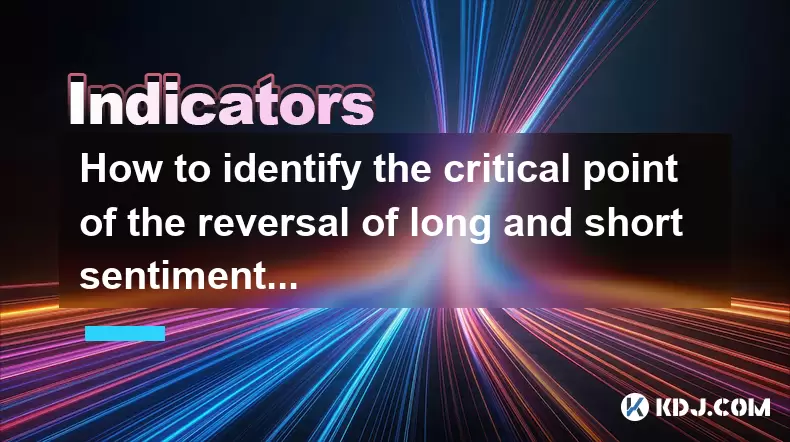
How to identify the critical point of the reversal of long and short sentiment through the K-line reverse package combination?
Jun 01,2025 at 03:36pm
In the world of cryptocurrency trading, understanding the sentiment of the market is crucial for making informed decisions. One effective method to gauge the potential reversal of long and short sentiment is through the analysis of K-line reverse package combinations. This technique involves studying specific patterns and formations within the K-line ch...
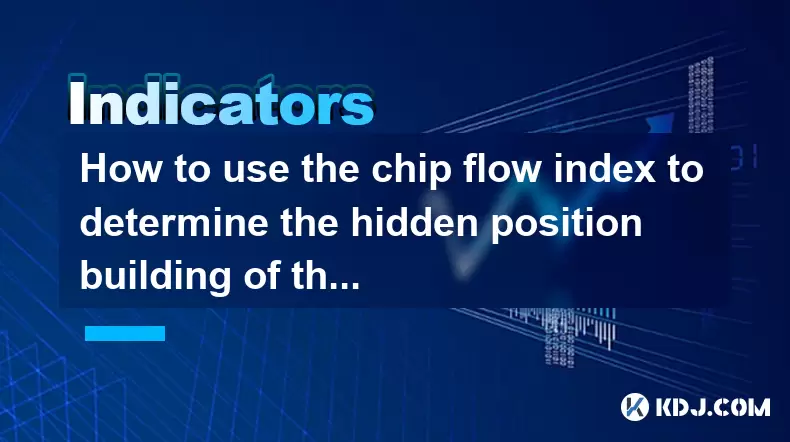
How to use the chip flow index to determine the hidden position building of the main funds?
Jun 01,2025 at 06:57pm
The Chip Flow Index (CFI), often referred to as the Volume Weighted Average Price (VWAP), is a crucial tool used by traders and investors to analyze the behavior of major funds in the cryptocurrency market. Understanding how to use the CFI can provide insights into the hidden position building of these main funds, which is essential for making informed ...
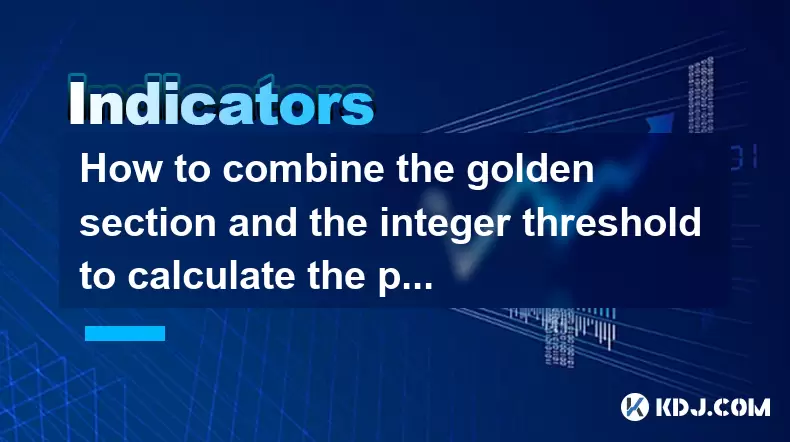
How to combine the golden section and the integer threshold to calculate the psychological target price?
May 31,2025 at 05:07pm
In the world of cryptocurrency trading, understanding and utilizing various technical analysis tools can significantly enhance your trading strategy. One such approach involves combining the golden section (also known as the Fibonacci retracement) with the integer threshold to calculate psychological target prices. This method can help traders identify ...

How to identify short-term support and pressure levels through the depth of the order queue?
Jun 02,2025 at 12:01am
Understanding how to identify short-term support and pressure levels through the depth of the order queue is crucial for traders looking to make informed decisions in the fast-paced world of cryptocurrency trading. The order queue, often referred to as the order book, displays the list of buy and sell orders for a particular cryptocurrency. By analyzing...
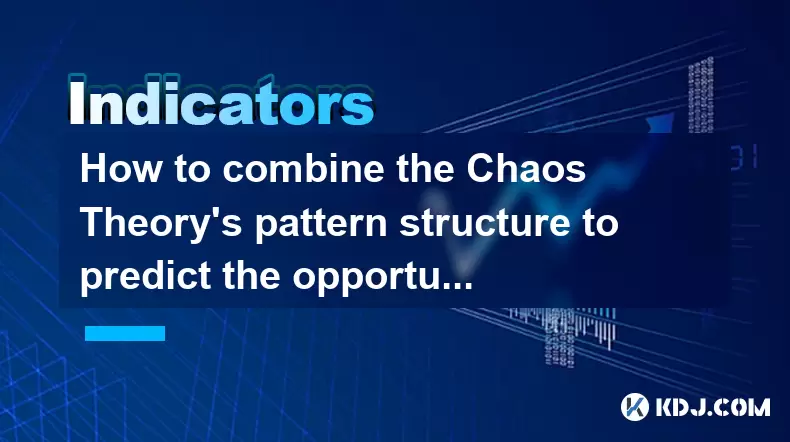
How to combine the Chaos Theory's pattern structure to predict the opportunity of small-level to large-level?
Jun 01,2025 at 07:56pm
The integration of Chaos Theory's pattern structure into the realm of cryptocurrency trading offers an intriguing approach to predicting market movements from small-level to large-level opportunities. Chaos Theory, traditionally applied in various scientific fields, suggests that within the apparent randomness of chaotic systems, there are underlying pa...
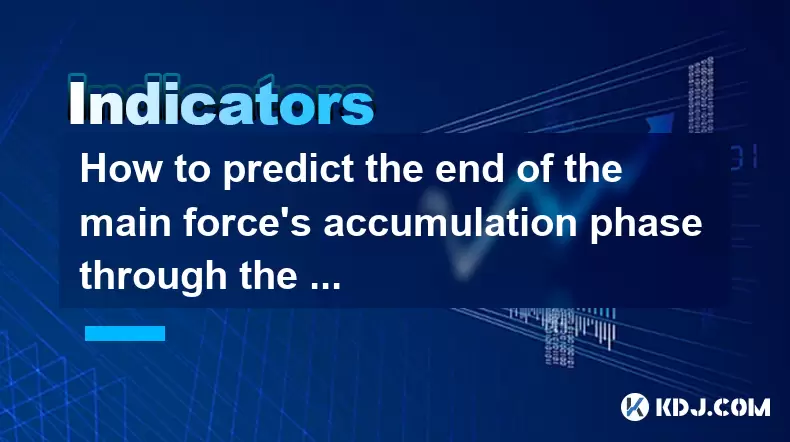
How to predict the end of the main force's accumulation phase through the volume and energy tidal cycle?
Jun 01,2025 at 02:28pm
The accumulation phase in cryptocurrency markets is a crucial period where the main force, often institutional investors or large holders, accumulate a significant amount of the asset before a major price movement. Predicting the end of this phase can be challenging but can be approached by analyzing the volume and energy tidal cycle. Here’s a detailed ...

How to identify the critical point of the reversal of long and short sentiment through the K-line reverse package combination?
Jun 01,2025 at 03:36pm
In the world of cryptocurrency trading, understanding the sentiment of the market is crucial for making informed decisions. One effective method to gauge the potential reversal of long and short sentiment is through the analysis of K-line reverse package combinations. This technique involves studying specific patterns and formations within the K-line ch...

How to use the chip flow index to determine the hidden position building of the main funds?
Jun 01,2025 at 06:57pm
The Chip Flow Index (CFI), often referred to as the Volume Weighted Average Price (VWAP), is a crucial tool used by traders and investors to analyze the behavior of major funds in the cryptocurrency market. Understanding how to use the CFI can provide insights into the hidden position building of these main funds, which is essential for making informed ...

How to combine the golden section and the integer threshold to calculate the psychological target price?
May 31,2025 at 05:07pm
In the world of cryptocurrency trading, understanding and utilizing various technical analysis tools can significantly enhance your trading strategy. One such approach involves combining the golden section (also known as the Fibonacci retracement) with the integer threshold to calculate psychological target prices. This method can help traders identify ...

How to identify short-term support and pressure levels through the depth of the order queue?
Jun 02,2025 at 12:01am
Understanding how to identify short-term support and pressure levels through the depth of the order queue is crucial for traders looking to make informed decisions in the fast-paced world of cryptocurrency trading. The order queue, often referred to as the order book, displays the list of buy and sell orders for a particular cryptocurrency. By analyzing...

How to combine the Chaos Theory's pattern structure to predict the opportunity of small-level to large-level?
Jun 01,2025 at 07:56pm
The integration of Chaos Theory's pattern structure into the realm of cryptocurrency trading offers an intriguing approach to predicting market movements from small-level to large-level opportunities. Chaos Theory, traditionally applied in various scientific fields, suggests that within the apparent randomness of chaotic systems, there are underlying pa...

How to predict the end of the main force's accumulation phase through the volume and energy tidal cycle?
Jun 01,2025 at 02:28pm
The accumulation phase in cryptocurrency markets is a crucial period where the main force, often institutional investors or large holders, accumulate a significant amount of the asset before a major price movement. Predicting the end of this phase can be challenging but can be approached by analyzing the volume and energy tidal cycle. Here’s a detailed ...
See all articles
























































































